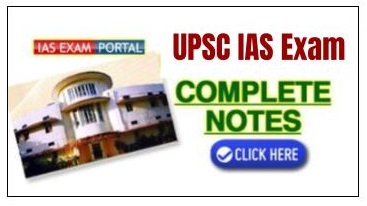(HOT) UPSC Current Affairs 2025 PDF
NEW! The Gist (NOV-2025) | E-BOOKS
(Syllabus) Punjab PSC (Pre) : Combined State Civil Services Exam - Civil Engineering
Punjab Public Service Commission
SYLLABI FOR THE EXAMINATION PART-B PRELIMINARY EXAMINATION
CIVIL ENGINEERING CODE NO. (20)
PART-A
Engineering Mechanics :
Units and Dimensions, SI Units, Vectors, Concept of Force, Concept of particle
and rigid body. Concurrent, non-concurrent and parallel forces in a plane,
moment of force and Varignon’s theorem, free body diagram, conditions of
equilibrium, Principle of virtual work, equivalent force system. First and
Second Moments of area, Mass moment of Inertia. Static Friction Inclined plane
and bearings.
Kinematics and Kinetics :
Kinematics in cartesian and polar co-ordinates, motion under
uniform and non-uniform acceleration, motion under gravity. Kinetics of particle
: Momentum and Energy principles, ‘D’ Alembert’s Principle, Collision of elastic
bodies, rotation of rigid bodies, simple harmonic motion.
2. Strength of Materials :
Simple Stress and Strain, Elastic constants, axially loaded
compression members, Shear force and bending moment, theory of simple bending,
Shear Stress distribution across cross sections, Beams of uniform strength, Leaf
spring, Strain Energy in direct stress, bending and shear.
Deflection of beams :
Macaulay’s method, Mohr’s moment area method, Conjugate beam method,
unit load method. Torsion of Shafts, Transmission of power, closecoiled helical
springs, Elastic stability of columns : Euler’s, Rankine’s and Secant formulae.
Principal stresses and strains in two dimensions, Mohr’s Circle. Theories of
Elastic Failure, Thin and Thick cylinders : Stresses due to internal and
external pressures—Lame’s equations.
3. Structural Analysis :
Analysis of pin jointed plane trusses, deflection in trusses. Three hinged and
two hinged arches, rib shortening, temperature effects, influence lines in
arches. Analysis of propped cantilevers, fixed beams, continuous beams and rigid
frames. Slope deflection, moment distribution, Kani’s method and Matrix method :
Force and Displacement Methods. Rolling loads and influence lines for
determinate beams and pin jointed trusses.
PART-B
Geotechnical Engineering:
Types of soil, field identification and classification, phase
relationships, consistency limits, particle size distribution, classification of
soil, structure and clay mineralogy. Capillary water and structural water,
effective stress and pore water pressure, Darcy’s Law, factors affecting
permeability, determination of permeability, permeability of stratified soil
deposits. Seepage pressure, quick sand condition, compressibility and
consolidation, Terzaghi’s
theory of one dimensional consolidation, consolidation test. Compaction of soil,
optimum moisture content, Proctor Density. Subsurface exploration, methods of
boring, sampling, types of sampler, field tests. Shear strength of soils,
Mohr-Coulomb failure theory, shear tests. Earth pressure at rest, active and
passive pressure, Rankine’s theory, Coulomb’s wedge theory, earth pressure on
retaining wall. Bearing capacity, Terzaghi and other important theories, net and
gross bearing pressure, Immediate and consolidation settlement. Load carrying
capacity of pile groups. Stability of slope-Conventional method of slices,
stability numbers.
Transportation Engineering :
Highway alignment, choice of layout and capacity of highways, location survey,
geometric design of highways—various elements, curves, grade separation and
segregation of traffic, intersection design, highway materials and testing sub
grade and pavement components, types of pavements, road drainage, elements of
airport engineering. Railway engineering-elements of permanent track-rails,
sleepers, ballast and rail fastenings, tractive resistance, elements of
geometric design—gradients and grade compensation on curves, cant transition
curves and vertical curves, stresses in railway tracks, points and crossings,
signaling and interlocking, maintenance of railway track. Culverts and small
bridges.
PART-C
Fluid Mechanics:
Fluid properties, fluid statics, forces on plane and curved surfaces,
stability of floating and submerged bodies.
Kinematics:
Velocity, streamlines, continuity equation, accelerations
irrotational and rotational flow, velocity potential and stream functions,
flownet, separation.
Dynamics:
Euler’s equation along streamline, control volume equation,
continuity, momentum, energy and moment of momentum equation from control volume
equation, applications to pipe flow, moving vanes, moment of momentum,
Dimensional analysis. Boundary layer on a flat plate, drag and lift on bodies.
Laminar and Turbulent Flows. Laminar and turbulent flow through pipes, friction
factor variation, pipe networks, water hammer, and surge tanks.
Open Channel Flow:
Energy and momentum correction factors, uniform and no uniform flows, specific
energy and specific force, critical depth, friction factors and roughness
coefficients, flow in transitions, free overfall, weirs, hydraulic jump, surges,
gradually varied flow equations, surface profiles, moving hydraulic jump.
PART-D
Environmental Engineering
Water Supply:
Estimation of surface and subsurface water resources, predicting
demand for water, impurities of water and their significance, physical, chemical
and bacteriological analysis, water borne diseases, standards for potable water.
Intake of water:
pumping and gravity schemes, water treatment: principles of
coagulation, flocculation and sedimentation; slow-, rapid-, pressure, filters;
chlorination, softening, removal of taste, odour and salinity.
Water storage and distribution:
Storage and balancing reservoir types, location and capacity. Distribution
systems: layout, hydraulics of pipe lines, pipe fittings, valves including check
and pressure reducing valves, meters, analysis of distribution systems, leak
detection, maintenance of distribution systems, pumping stations and their
operations.
Sewerage systems:
Domestic and industrial wastes, storm sewage—separate and combined
systems, flow through sewers, design of sewers, sewer appurtenances, manholes,
inlets, junctions, siphon. Plumbing in Public buildings.
Sewage characterisation:
BOD, COD, solids, dissolved oxygen, nitrogen and TOC. Standards of
disposal in normal water course and on land.
Sewage treatment:
Working principles, units, chambers, sedimentation tank, trickling
filters, oxidation ponds, activated sludge process, septic tank, disposal of
sludge, recycling of waste water.
Construction Management :
Elements and principles of Activity on Arrow (AOA) and Activity on Node (AON)
networks and work breakdown structure. Interfaces. Ladder networks. Activity
time. Time computations and Floats. ATC and PTC trade-off. Work study and
sampling. Scheduling principles-Material schedules. ABC and EOQ analysis of
inventory. Budgeting with bar charts. Working capital. PERT, probability of
completion. Elements of Engineering Economics, methods of appraisal, present
worth, annual cost, benefit-cost, incremental analysis. Economy of scale and
size. Choosing between alternatives including levels of investments. Project
profitability.

